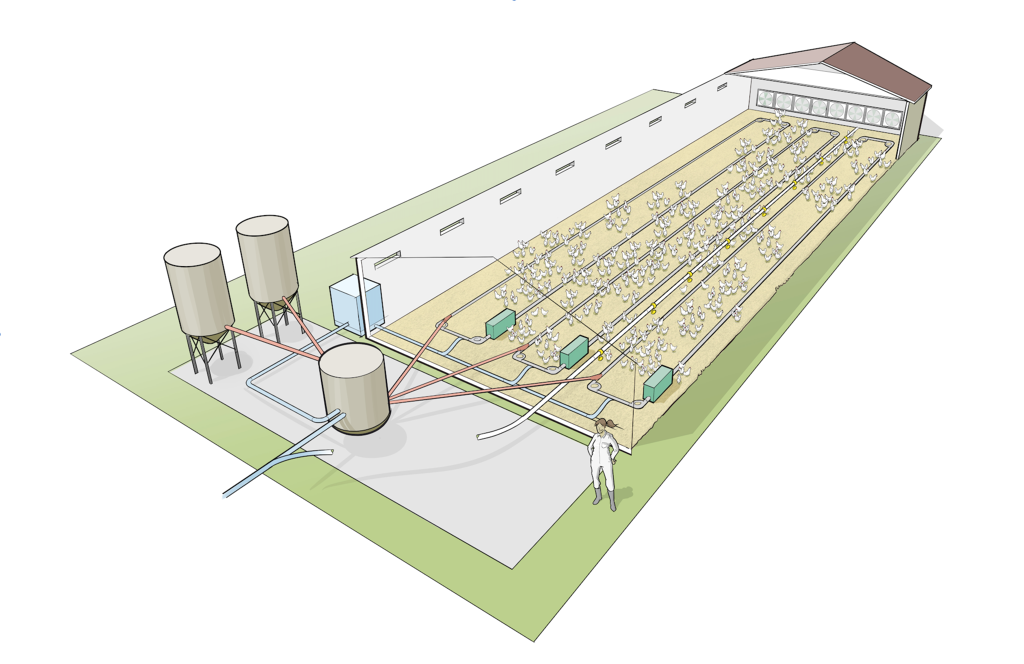HydraPeck: A wet feeding system for poultry
Feeding chickens usually relies on dried pellets made from crops that humans could also eat. This creates competition between animal feed and human food, and requires energy-intensive processing. Hydra Peck explores a different approach: feeding poultry with wet, porridge-like feed made from circular by-products. The challenge is to design a system that delivers this fresh diet reliably under farm conditions.
Today’s poultry industry faces three urgent challenges: rising feed costs, competition between human food and animal feed, and the need to reduce its environmental footprint. Conventional feed production often involves drying ingredients at high energy costs and using raw materials suitable for human consumption. At the same time, vast amounts of nutritious by-products from the food industry remain underused. Hydra Peck addresses this by rethinking how chickens are fed. It explores how wet feed can be prepared and distributed at scale, improving animal health and welfare while reducing the pressure on land, energy, and resources.
Hydra Peck is a feeding system that mixes dry feed ingredients with liquid by-products into a fresh, porridge-like meal for broilers. The feed is distributed and presented to the chickens in openable pipes, which are cleaned throughout the day. This design emerged through the use of Reflexive Interactive Design (RIO) methodology, combining engineering with input from farmers, industry partners, and animal scientists. Prototypes were tested in real barns and iteratively improved through workshops and feedback sessions. Unlike traditional feeders, Hydra Peck allows to reliably distribute a diet with a moisture content of around 50%. By connecting circular waste streams with practical farm solutions, it offers both a technological innovation and a new mindset for feeding animals.
Hydra Peck contributes to the transition towards circular and climate-friendly farming. By valorising by-products that would otherwise go to waste, it reduces feed-food competition and greenhouse gas emissions. For farmers, it offers a chance to lower costs while enhancing bird welfare and productivity. On a larger scale, the project highlights how design research can tackle systemic challenges in agriculture by linking technology, sustainability, and stakeholder needs. The approach also exposes challenges: wet feed is perishable, requires new infrastructure, and asks farmers to adopt unfamiliar practices. Still, the system sparks debate about how to align animal production with sustainability and how creative design can open new paths in agriculture.

Share
Contacts
- -Salma Riansalma.rian@wur.nl
- -Marjolein DerksMarjolein.derks@wur.nl
- -Peter Groot Koerkamppeter.grootkoerkamp@wur.nl
- -Rene Kwakkelrene.kwakkel@wur.nl
